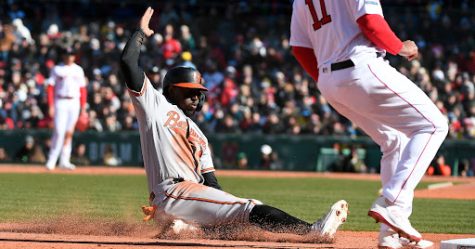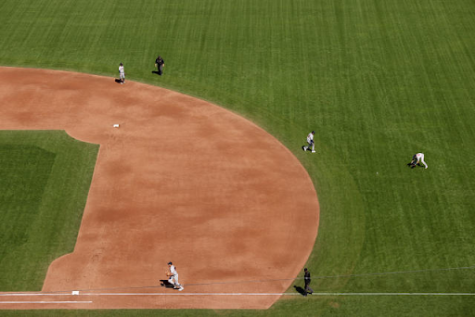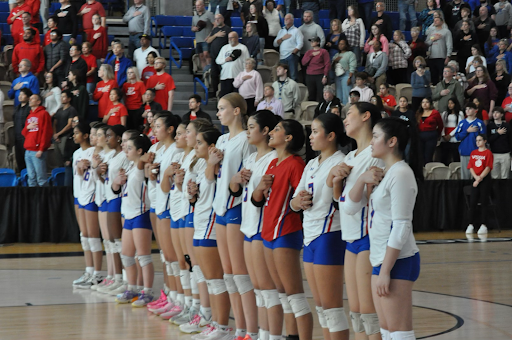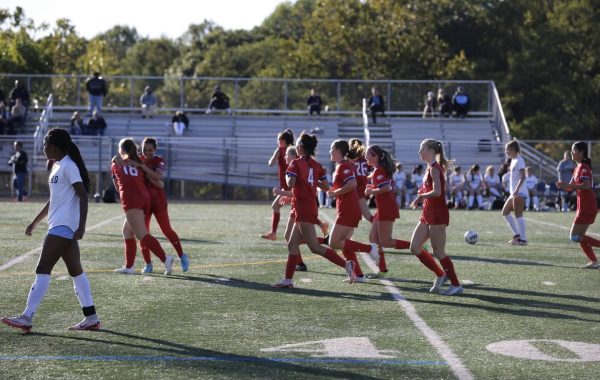MLB rule updates: Good or bad?

Getty Images
With MLB baseball back for about a month now, we have seen new and improved rules put in place to try and revive a sport that’s viewership has decreased by over 50% since 2016 (University of Michigan). Are these major changes beneficial to baseball, or are they just giving fans one more reason to not tune in?
For the past few years, baseball has earned a bad reputation. Whether it’s due to games being too long, not having enough action to entice a viewer, or the overall slow pace of play, people are falling out of love with the game that is supposed to be “America’s pastime.” Acknowledging this, the league created a set of rules over this past year that look to accelerate the game and maximize the entertainment value.
The main way the MLB tried to speed up gameplay was with the pitch clock. Batters must be inside the batter’s box within 8 seconds of the 15-second timer (20 seconds if there is a runner on base), while pitchers only need to “start the motion to deliver a pitch” before the clock hits 0. Failure to follow the pitch clock rule results in an automatic ball or strike applied to the count, depending on which team disobeyed the rule. Although the average game this season is around 31 minutes shorter compared to the 2022 season, fans and players are still in between opinions on the clock, including veteran ace for the New York Mets Max Scherzer, who believed the clock was a good idea, but definitely needed some tweaks: “I love the pace, I don’t like the clock. I’ll double down on that. I think the umpires should have discretion and turn the clock off” (Elite Sports NY).
In another attempt at cracking down on the slow pace of play, the MLB has implemented a rule that a pitcher gets two “disengagements” per plate appearance without penalty, with the third resulting in a balk and advancing the runners. A disengagement is defined as “any time the pitcher makes a pickoff attempt, fakes a pickoff, or simply steps off the rubber for any reason, as well as when the defense requests time” (ESPN). Along with this, the sizes of the bases have gone from 15 to 18 inches, which creates a 4.5-inch reduction between first and second base. While these bigger bases help promote a lower chance of injury, there is also now an easier chance of stealing bases due to the reduced distance and pitchers not being able to check on runners an unlimited amount of times. Consequently, this season has seen a 30% increase in stolen bases compared to last season, and overall action that games previously lacked.

The final major change implemented in the game is the ban of the shift. In the 2023 season, all four infielders are required to be on the infield dirt by the time a pitch is thrown, with two players on each side of second base. Previously, teams could put their infielders in unorthodox positions to help defend against a ground ball to short right field, usually hit by left-handed batters. Last season, lefties hit for an abysmal .228 average on the season, which is up to .245 after shift changes.

Overall, these changes have been great for a sport that was in dire need of change. Batting average is up by 16 points since last season, the amount of steals are up, games are shorter, and more fans are tuning in. There was a 42% increase in viewers on MLB TV (172 million), 2.2 million viewers on Fox Sports Saturday DH, and 1.6 million viewers throughout ESPN’s Opening Weekend (Yahoo Sports). These changes that the MLB made may have saved baseball for what we know it as, and they should at least be considered as a positive for the sport.
jw/ac/jy/ew
For more breaking news and photos, follow The Wingspan on Instagram and Twitter @CHSWingspan.




